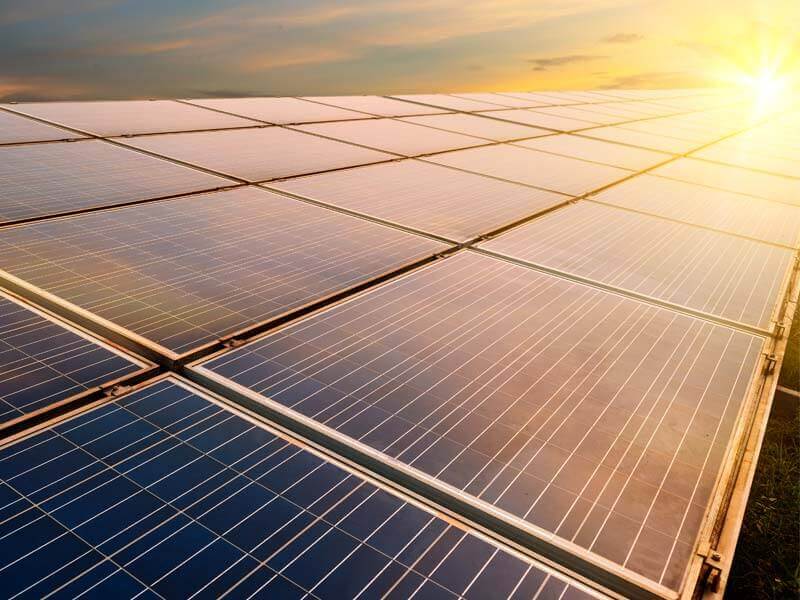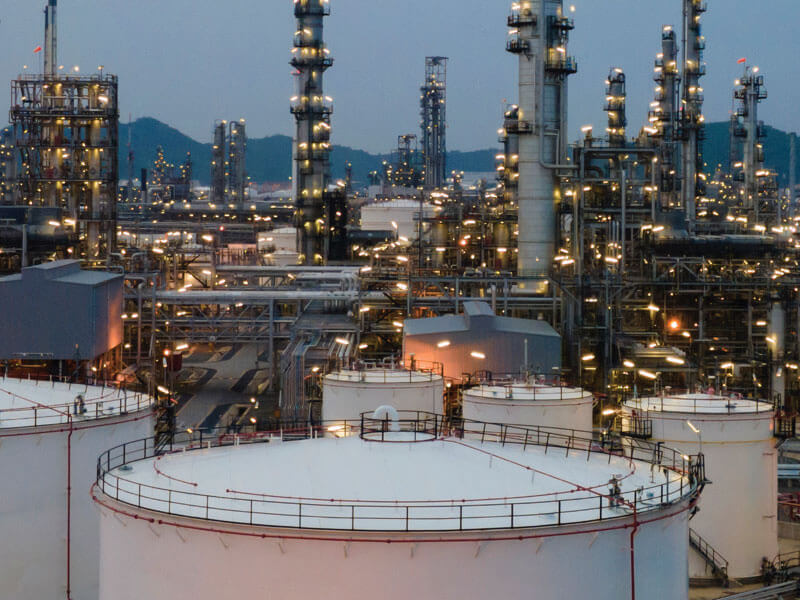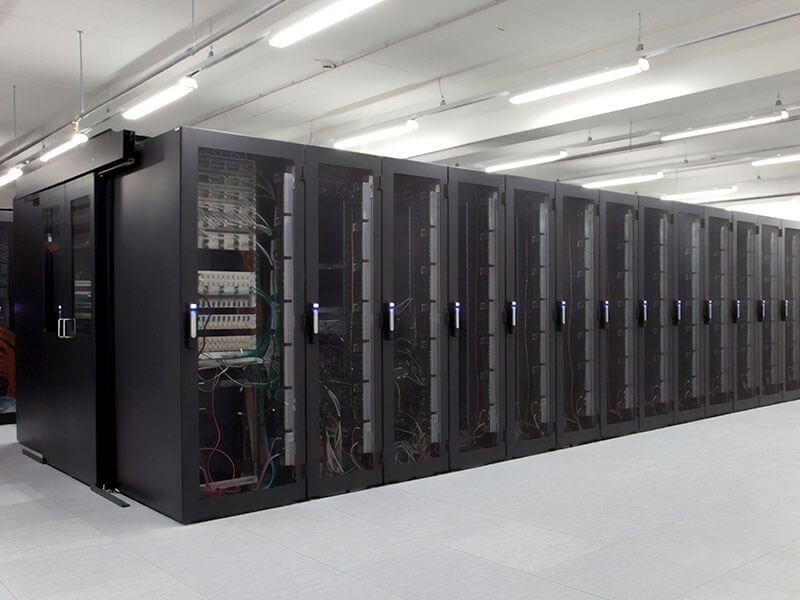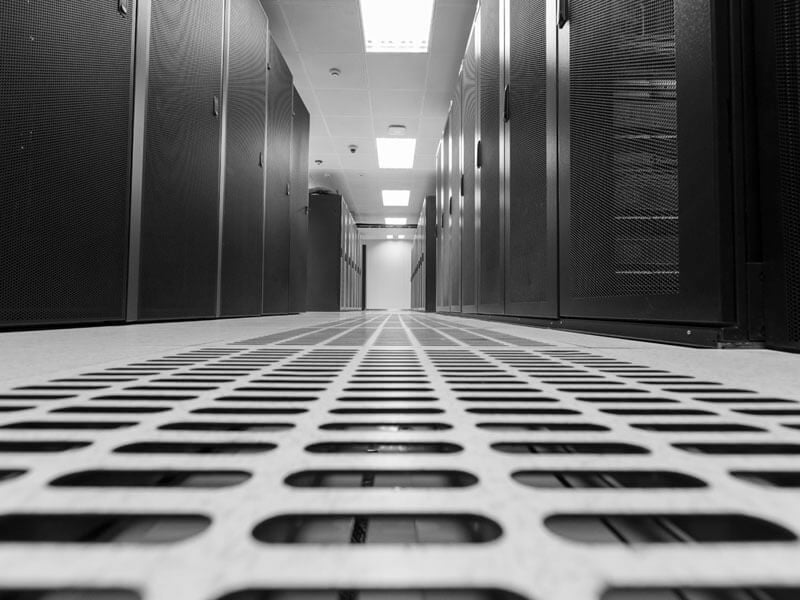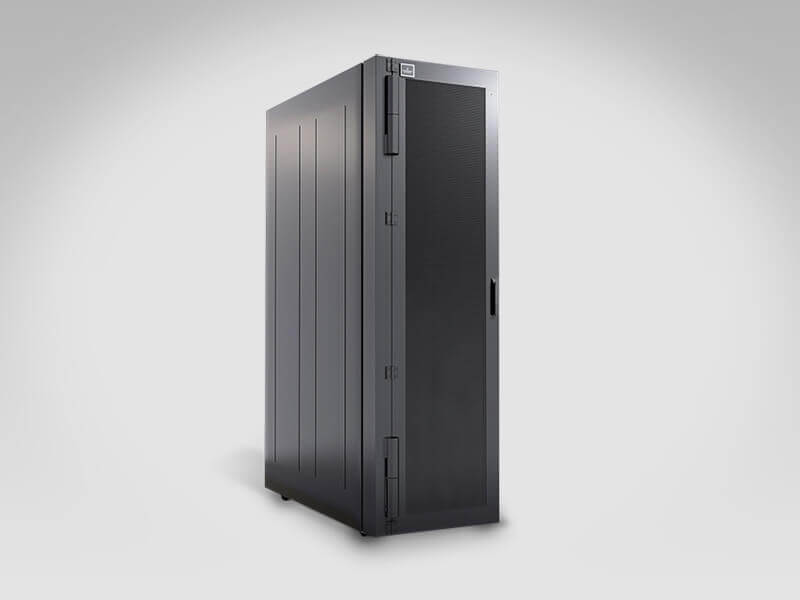
Building and Operating Low-Impact Data Centers
Reducing data center environmental impact does more than benefit the environment. It can reduce operating costs, help attract new customers, and proactively address ever-tightening regulatory requirements. Your path will depend on whether you’re developing a new facility or seeking to optimize an existing data center.
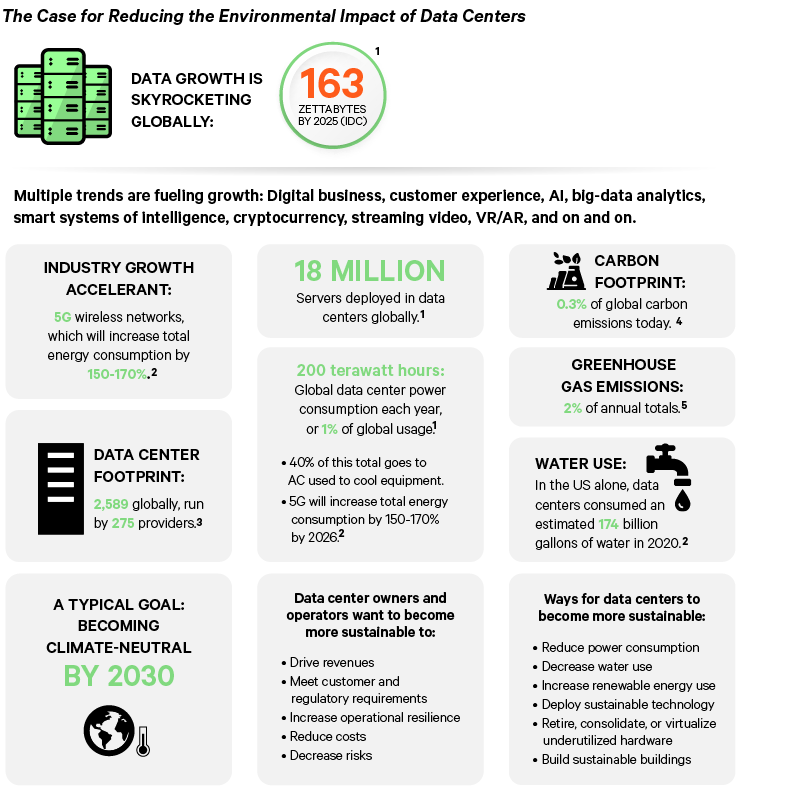
Building a Low-Impact Data Center
Organizations early in the data center development process have an advantage in driving down emissions compared with those optimizing existing facilities. In a new facility, you’re dealing with a blank slate, unburdened by legacy systems. Every decision can be made with an eye toward impact reduction and the resulting facility can often achieve a level of efficiency and resource utilization that isn’t possible with existing facilities. Here are some of the decisions that can affect the environmental impact of a new data center.
Where organizations have the flexibility to choose, locating facilities in colder climates enables greater use of free cooling to drive down facility energy consumption. However, with the need to move computing and storage resources closer to users, operators don’t always have that luxury and must be able to operate efficiently in any environment, including warmer climates with limited water resources. Regardless of where your data center is located, climate and availability of water should be considered during the design.
Establishing efficiency and water use goals for a new facility may open new financing options. “Green bonds” are growing in popularity and ESG-linked loans, in which interest rates are tied to the environmental performance, are also available.
Several organizations have established tools and certifications to help developers reduce the impact of buildings. Here are three to consider:
- BREEAM is an assessment method used to master-plan projects, infrastructure, and buildings. It helps data center owners and operators balance cost and lifecycle value, reduce operational costs, and decrease risk.
- The Leadership in Energy and Environmental Design (LEED), administered by the U.S. Green Building Council, provides certification for buildings based on energy efficiency, carbon footprint, air quality, building materials, water usage, and other factors.
- The ISO 21930:2017 standard, Sustainability in buildings and civil engineering works, enables assessors to determine the eco-friendliness of building or infrastructure projects.
Developers can leverage innovative and more environmentally friendly materials in their buildings. One promising material is CarbonCure, which chemically mineralizes CO2 in concrete while enhancing strength. Building Transparency is an organization that provides an Embodied Carbon in Construction (EC3) calculator to help model the carbon and price impacts of different material choices used in data center construction projects.
Pre-fabrication can streamline the development process for a new data center. This method can also drive a high degree of operational efficiency through the holistic approach to design, engineering, construction and startup.
The carbon footprint of a data center is highly dependent on the source of energy being used. Utilities in most areas are limited in their ability to support operation with 100% renewable power, forcing operators committed to zero carbon operation to turn to other methods. Leaders across the industry are working to advance technologies that will support the transition to locally generated renewable power to gain more control over the energy used by data centers. Deploying technologies such as UPS systems with dynamic grid support capabilities paired with lithium-ion batteries can position a new data center to integrate these technologies as they become available.
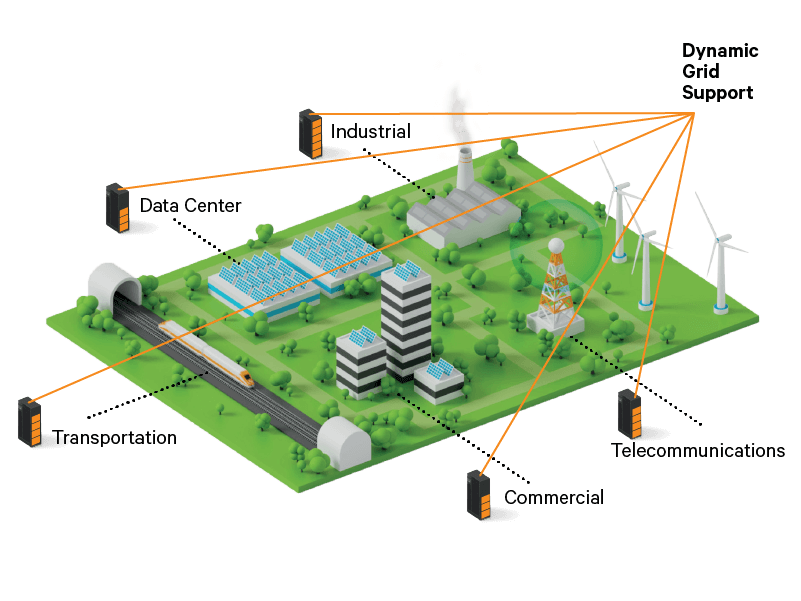
Working with vendors who have made commitments to reduce the environmental impact of their operations and solutions can help ensure all parties share common goals. Efficiency-related product certifications, such as ENERGY STAR, can also be helpful in choosing appropriate vendors and solutions.
Critical power and thermal management systems play a major role in data center efficiency. There are multiple types of cooling systems being used today that vary in their energy and water efficiency. Power systems can have different efficiency ratings, control capabilities, and overload ratings. Working with an infrastructure partner with a full range of solutions and expertise in enabling efficient operations is the best approach to ensuring infrastructure systems are tailored to your goals.
Reducing Environmental Impact in Existing Data Centers
If you’re just getting started addressing data center inefficiencies, there could be some easy wins that can be realized by moving to aisle containment, monitoring data center temperatures, or increasing the use of free cooling. If you’ve already implemented those solutions and are looking to take the next step on your journey, or have expanded your goals to incorporate aspects of the net zero data center, you may need look to newer technology systems that have emerged in recent years. Regardless of where you are starting, here’s a roadmap for moving forward.
You need ways to measure what you’re trying to improve. Some metrics, such as PUE and WUE are relatively easy to capture and can be valuable in driving reduction in energy and water consumption. Others, such as measuring carbon emissions, can be more difficult, but may be necessary as reporting on emissions becomes more common.
With average PUE levels still above 1.5, there is opportunity in many data centers to achieve improvements. Legacy technologies, particularly those used in cooling the data center, can be a barrier to achieving significant improvements in PUE. Relatively simple approaches such as aisle containment and system-level controls can improve the efficiency of these systems, but at some point, it may be necessary to move to systems that can operate more efficiently and maximize free cooling. Work with your infrastructure partner to assess the existing system and implement recommended changes to operations. If it’s time to upgrade, your partner can also help you select an appropriate cooling solution based on your goals, data center location, size, and technology mix.
Tools such as intelligent rack PDUs can be deployed to gain deeper insight into power consumption across the data center. Temperature sensors integrated with the cooling system can be used to keep equipment in safe operating conditions without overcooling.
One way to reduce emissions is to use less energy, and that can often be accomplished by increasing equipment utilization rates. Identifying and decommissioning stranded servers, consolidating lightly used servers, and using server power management features all have the potential to increase IT utilization. Using modular infrastructure technologies can help ensure systems are sized to current requirements while retaining the flexibility to scale capacity as demand changes. New redundant power system architectures are also enabling UPS systems to achieve higher levels of utilization than was possible in the past.
Operators can reduce their emissions by taking advantage of power purchase agreements and renewable energy certificates. Some operators are also working with utilities to encourage more renewable energy and are making plans to support data centers with locally generated renewable power.
Water consumption hasn’t always been considered an issue for data centers, but with water becoming scarce in some areas, it has become one today. Operators tied to water-intensive cooling technologies may need to re-evaluate these systems and make changes that reduce their dependence on large volumes of water to cool their facilities.
Improperly disposed of e-waste can cause heavy metals to leak into the earth, contaminating groundwaters and rivers. Effective e-waste management programs can eliminate these risks through refurbishing, reusing, and reselling equipment that still has value, and ensuring responsible recycling of equipment that is at the end of its life. Valuable minerals that can be captured through recycling include steel, aluminum, copper and gold. Organizations can work with e-waste specialist to create closed-loop systems where they recover, recycle, and reprocess 100% of data center e-waste.
Resources



